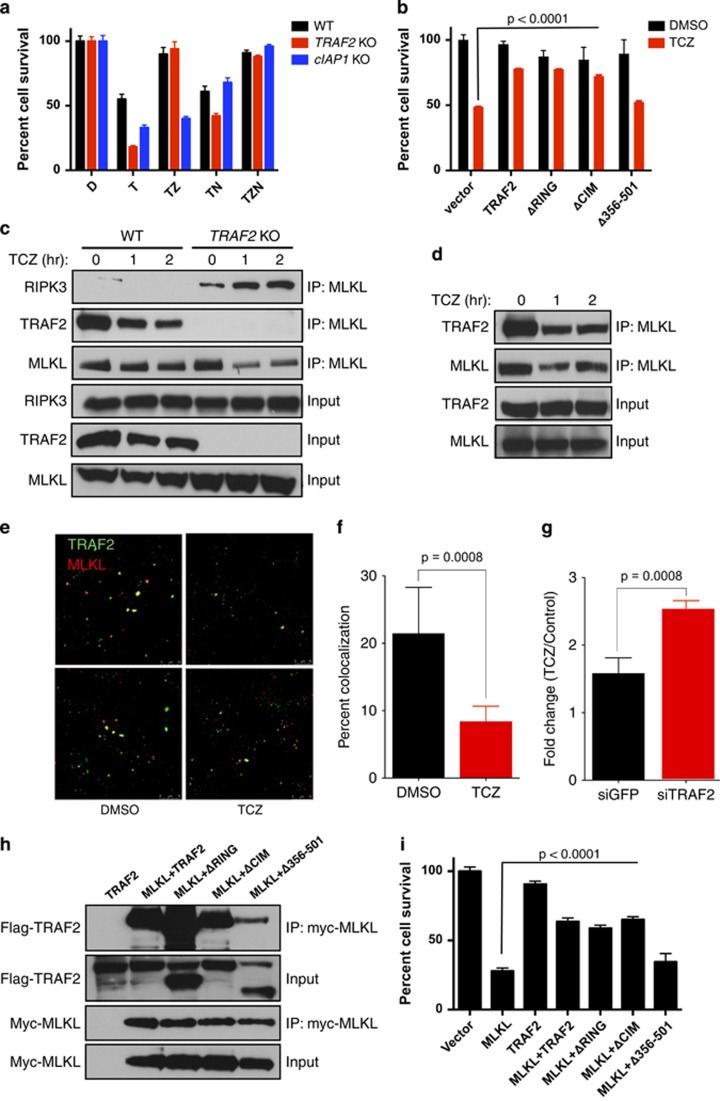Figure 2.
TRAF2 constitutively interacts with MLKL to suppress necroptosis. (a) WT, TRAF2 KO and cIAP1 KO MEFs were treated as indicated for 1 day and analyzed for survival. (b) TRAF2 KO MEFs were transfected with the indicated expression constructs for 2 days, pretreated with CZ for 1 h followed by T for an additional 5 h, and analyzed for survival. (c) WT and TRAF2 KO MEFs were treated as in b for the indicated times and analyzed by IP and IB. (d) L929 cells were treated as in c and analyzed by IP and IB. (e) L929 cells were treated as indicated for 90 min and analyzed by immunofluorescence (IF) with specific antibodies to TRAF2 (green) or MLKL (red). (f) Quantitation of IF data generated as in e. (g) L929 cells were transfected for 3 days with siRNA as indicated, treated with DMSO or TCZ for 90 min, analyzed by IF as in e and the data was quantitated (n=3) and depicted as fold change from DMSO control levels. (h) 293T cells were transfected with constructs encoding myc-epitope-tagged MLKL, WT TRAF2 or indicated TRAF2 deletion mutants for 1 day followed by myc IP and TRAF2 IB. (i) 293T cells were transfected as in h for 2 days and analyzed for survival. Bar graphs in i depict mean±S.E.M. of triplicates. Data in panels a, b depict mean±S.E.M. (n=4). For colocalization studies (panels f and g) three independent experiments were performed and six images for each treatment were quantified. P values are by Student's t test

